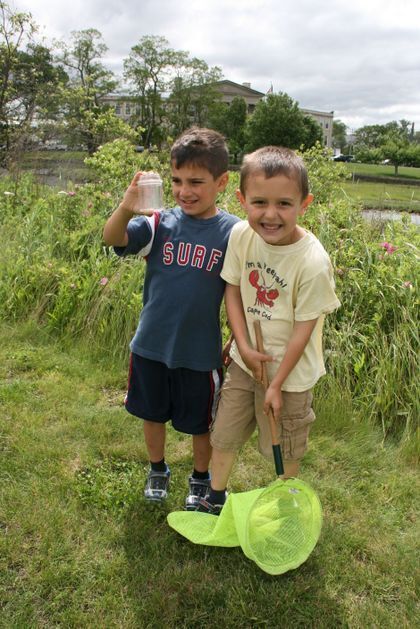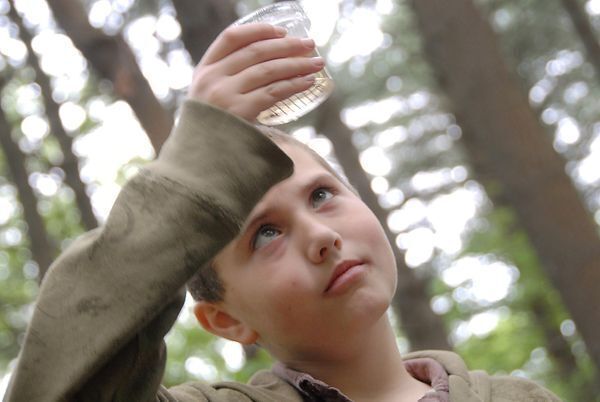Published August 2022
Digging Deep Into Outdoor Learning Spaces
By Lauren Parmelee, Senior Director of Education
My favorite middle school science teacher, Mr. Mitchell, facilitated “project-based learning” before that term was part of current curriculum jargon.
He believed in getting students outside to explore topics of their own choosing. I decided to create an illustrated report on the birds that lived in the fields and forests around my home. For another project, my friend Pam and I used her camera to take photos of abandoned tires and cars, roadside trash and broken glass. We wanted to raise concern about pollution in our community.
Is it a coincidence that I grew up to study ecology, work for environmental organizations, and became a passionate birder? I don’t think so. Great teachers like Mr. Mitchell deserve much credit for encouraging and inspiring young learners. His guidance, in addition to my nature-loving family, most certainly shaped the direction my life took as an environmental educator.
Studies have shown that taking children outside to observe and explore engages them in learning, improves academic performance, and reduces discipline issues. In addition, time in nature has health benefits such as exercise and social and emotional well-being. Children who play and learn in nature are also more likely to care for the earth.

There are quite a few schools in Rhode Island that have created outdoor spaces for students. Nature trails, vegetable and pollinator gardens, outdoor seating, and groves of trees all provide opportunities for children to learn. Audubon has been involved in many of these projects, offering expertise on native plants and nature trails, as well as providing activity guides and professional development for teachers. Even before I joined Audubon in 2015, the education staff had worked on outdoor spaces with schools in Smithfield, Foster, Bristol, Woonsocket, and other communities.
In 2016, Cindy Corsair from U.S. Fish & Wildlife reached out to Audubon about collaborating on a grantfunded initiative to create more schoolyard habitats in the state. They had developed the Schoolyard Habitat Project Guide, a step-by-step manual for developing outdoor spaces. Cindy had been using the guide in Connecticut and was looking to expand the program into Rhode Island.
Over the next five years, we worked together to support the development of school yard habitats in Johnston, Coventry, Cumberland, Portsmouth and East Providence. As a scientist, Cindy provided the habitat expertise and mentored the school teams. Audubon managed the grant funds, facilitated professional development, and produced a Schoolyard Habitat Resource Guide with activities, strategies, and tools for teachers.
We learned some lessons through our collaboration: a strong team is needed from the school and the community to plan, build and maintain schoolyard habitats, and it takes leadership and inspiration for educators to develop enthusiasm for taking students outdoors.

While casting about for new opportunities, Cindy came across an innovative project in Providence. The R.I. Department of Education (RIDE) was working with the City of Providence on redeveloping an old school off Charles Street for use as a “swing space.” Once the building and grounds are overhauled, Narducci School will be used temporarily by other Providence schools that are undergoing renovations.
Based on input from Audubon and U.S. Fish & Wildlife, as well as support from City Counselman Nicholas Narducci, this swing space is now going to include a restored woodland habitat and other outdoor learning areas. These green spaces will be available to the neighborhood, as well as the students. As different Providence schools cycle through this swing space, the teachers and students will use the schoolyard habitat for learning, and hopefully be inspired to create their own green spaces when they return to their permanent location.
What about all the other public schools across the state? Those that don’t have the resources to create natural areas or the confidence to take their students outside to learn? Funding from the National Fish and Wildlife Foundation (NFWF), matched by State funds, might just make it possible for Rhode Island to provide three hundred schools with the infrastructure, design expertise, and professional development to create, maintain and use outdoor learning spaces.
RIDE, with support and input from a number of partners including Audubon, just submitted a request for $7.5 million to NFWF to fund the design and implementation of school yard habitats, professional development, purchase of science and gardening tools, and more. This will be matched 100% by the State and has the full support of the Governor, the Federal delegation, U.S. Fish & Wildlife, RI Department of Environmental Management, a variety of school districts, URI GEMS-Net (science and math program) and of course, Audubon.
We know that spending time in nature is healthy. Children engage in learning that is project-based and takes place outdoors. This visionary statewide initiative could not only make learning across the curriculum more beneficial for Rhode Island children in the short term, it could inspire them to become environmentally literate stewards of a planet that really needs their help.

















